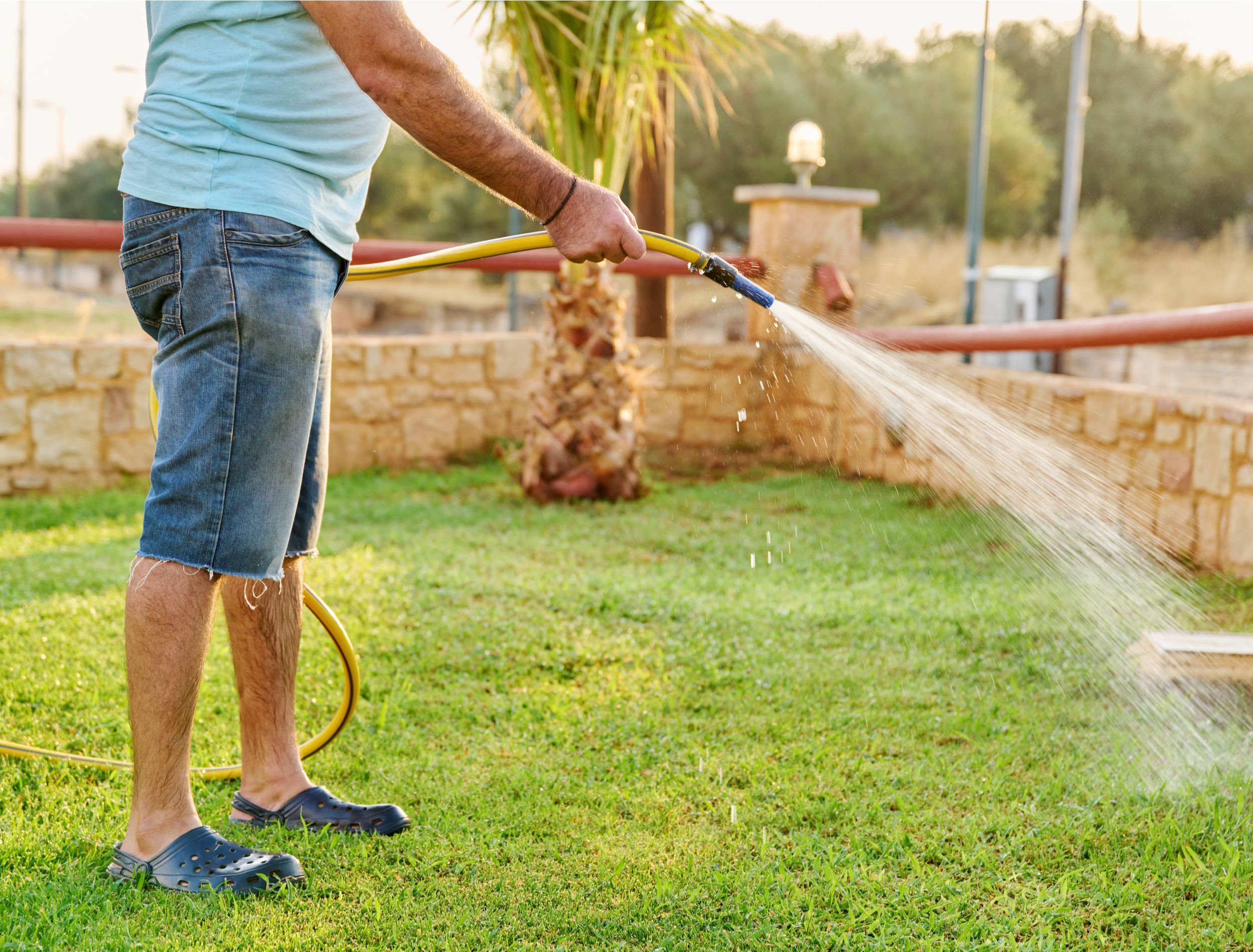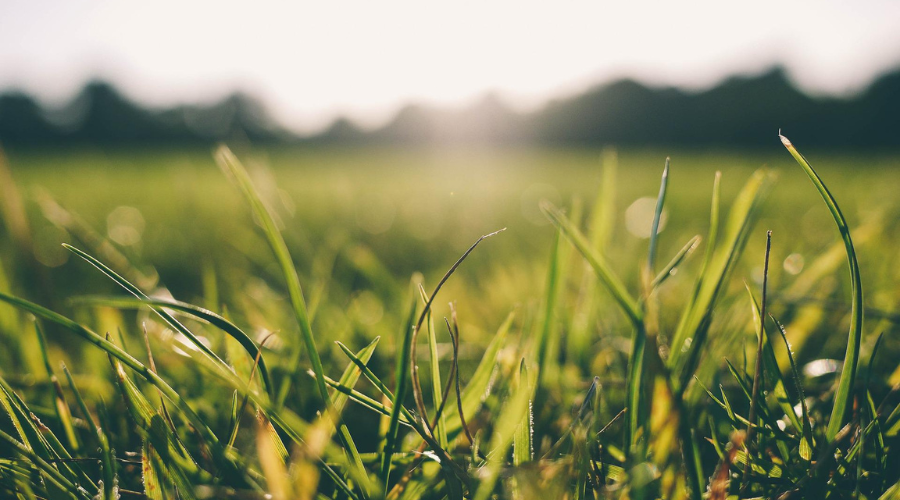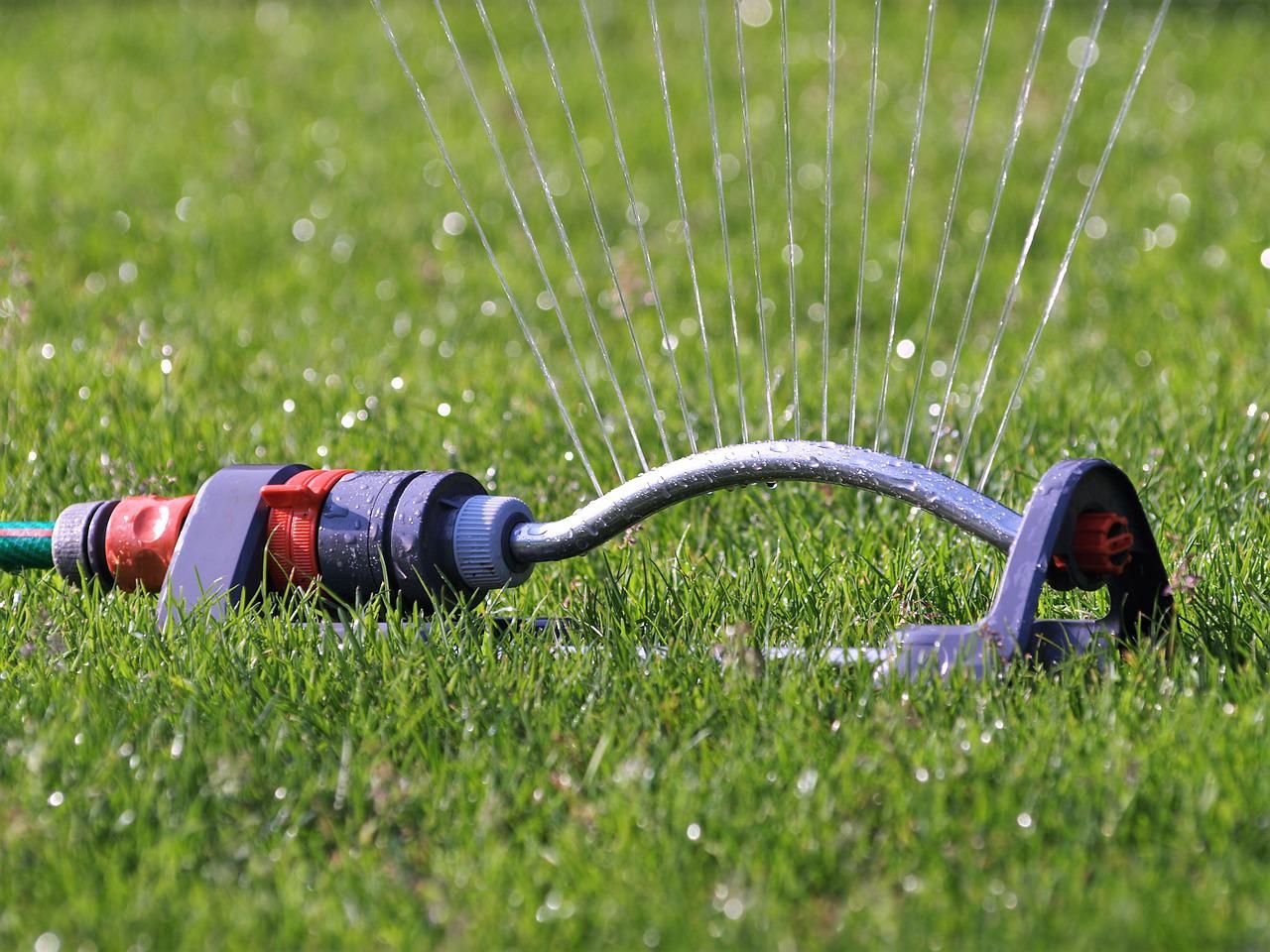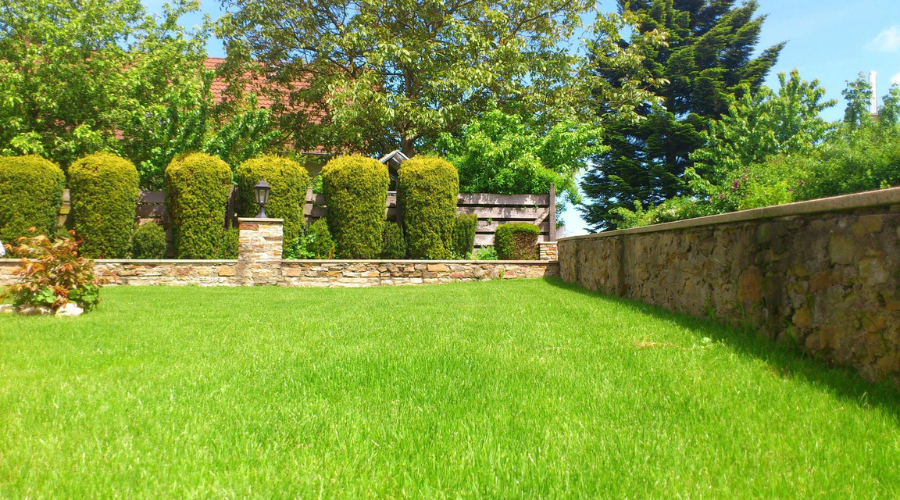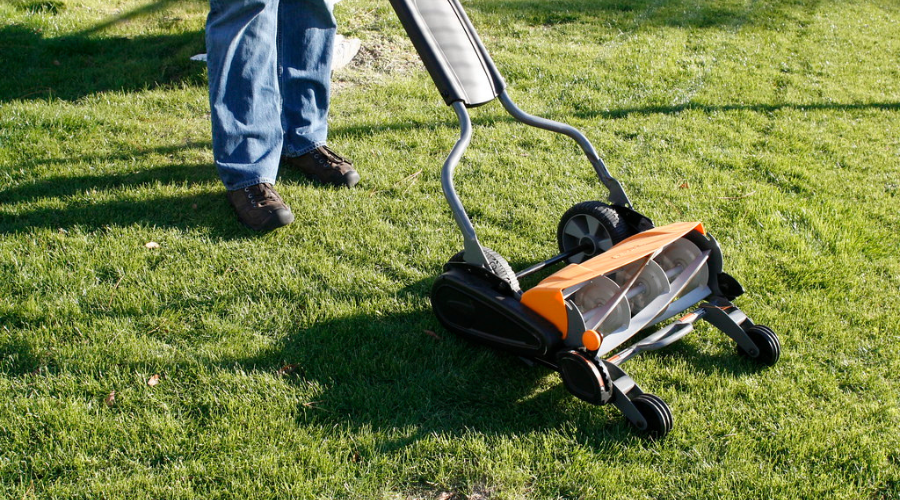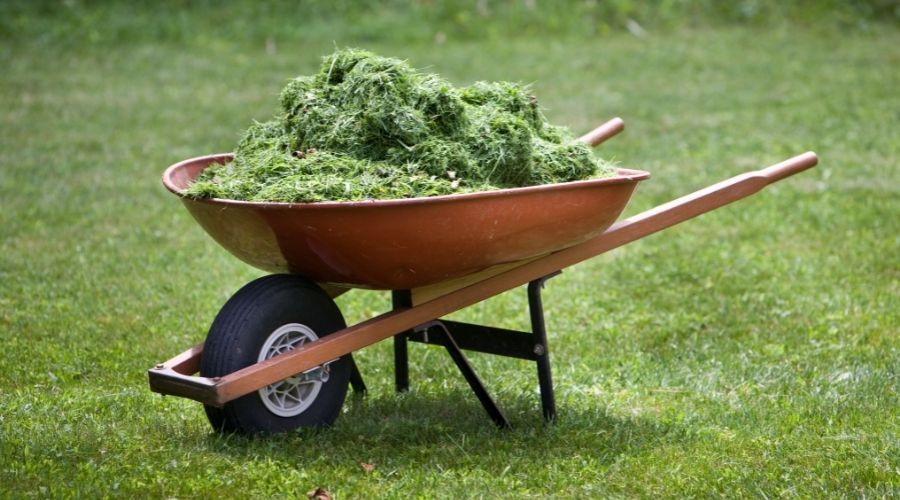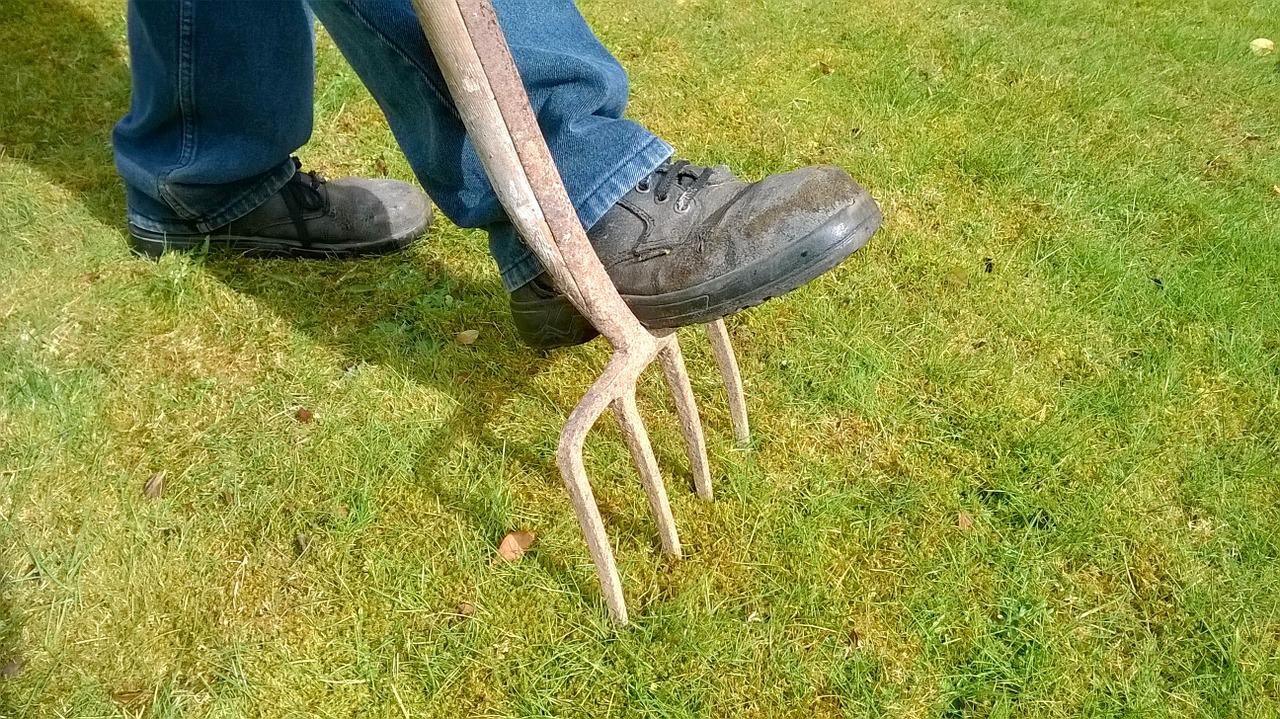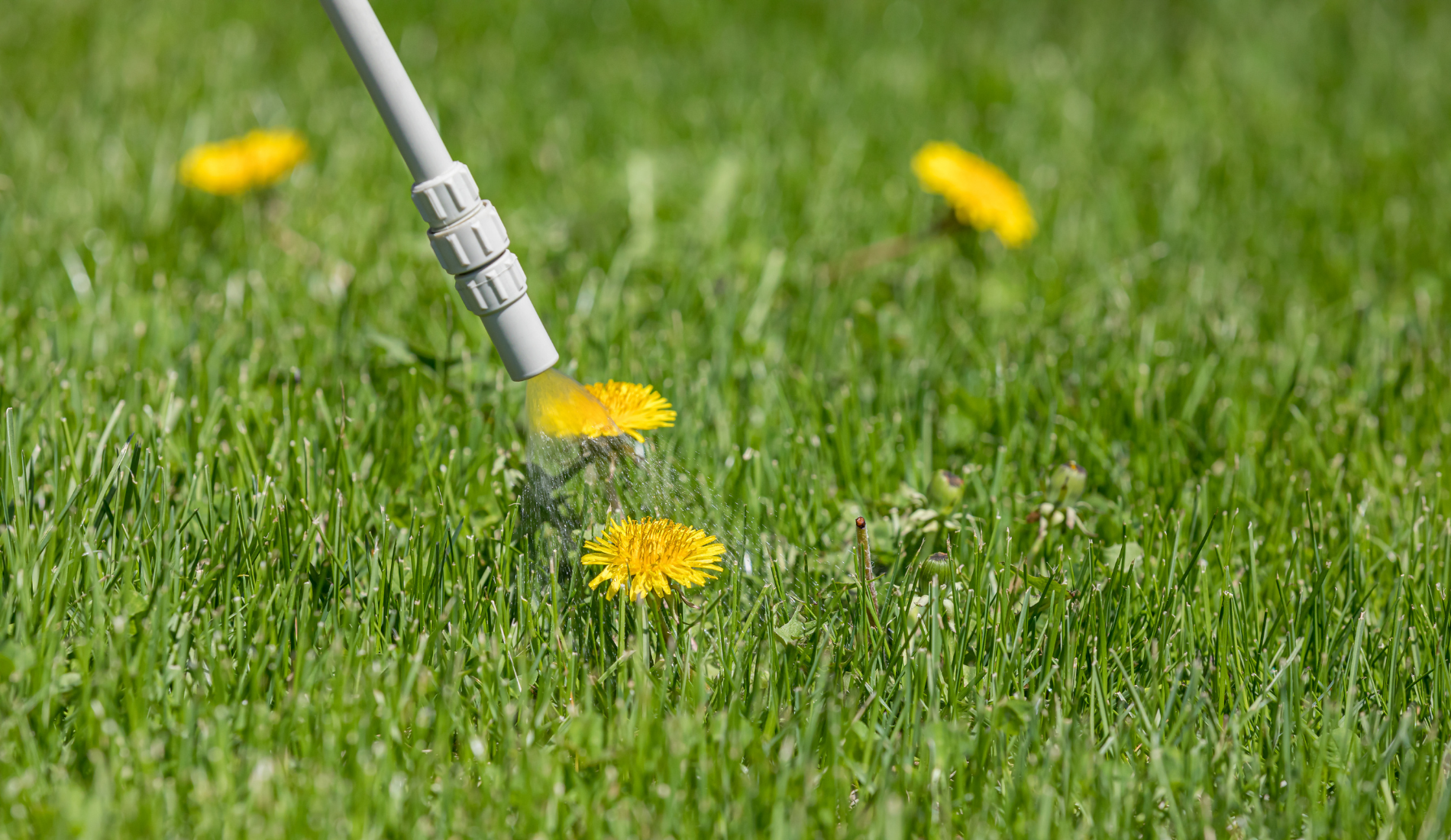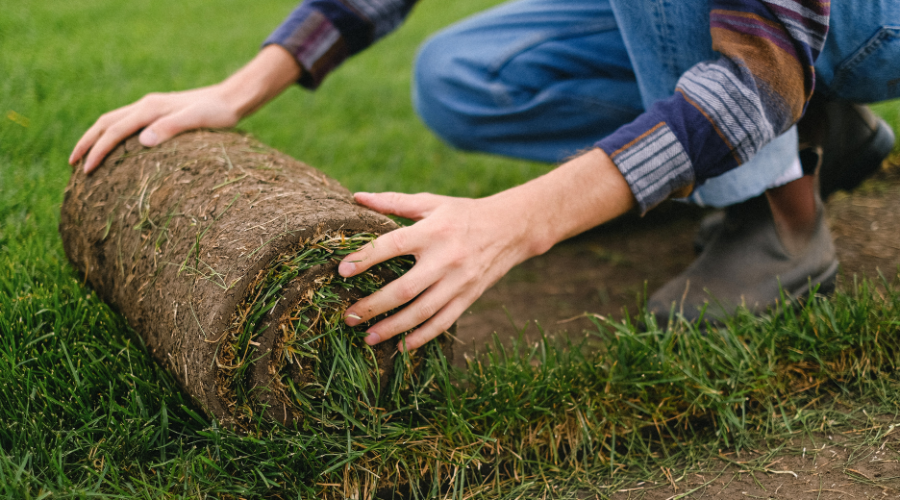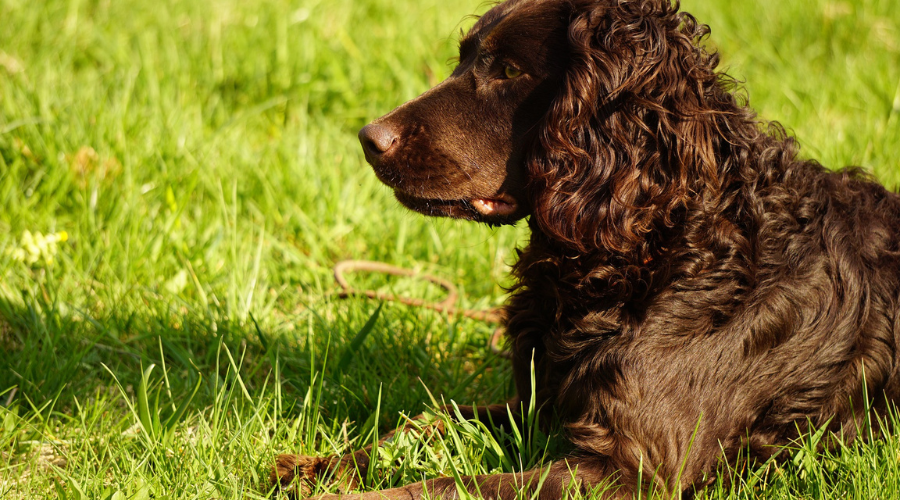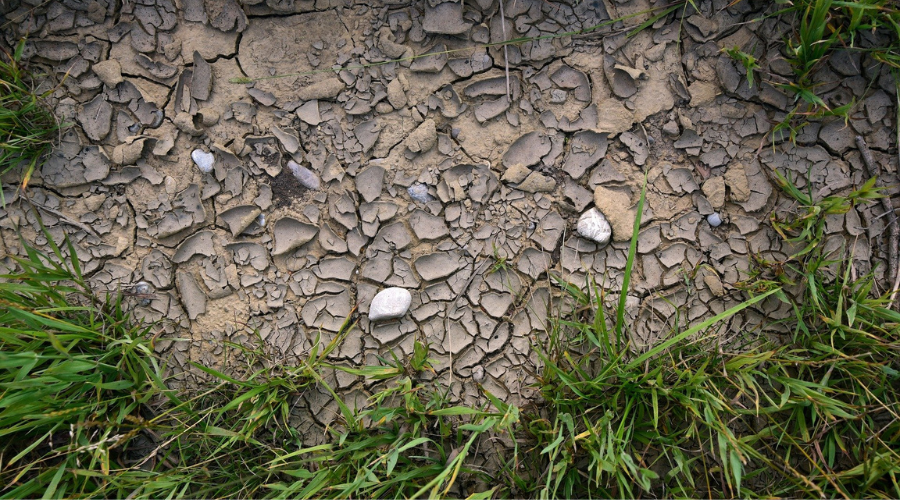Do you have a lawn that is affected by drought? Unfortunately, lawn alternatives are your only guaranteed defense against drought damaging your lawn. No more brown patches, just all-over, glorious green for good.
But if you are a real-grass purist battling a long spell without any rain, lawn care takes extra special attention during a drought. Try these 10 tips to keep your lawn healthy and ready to recover when the weather turns.
WHAT YOU NEED
- Soil moisture sensor
- Sprinkler or hose
- Mulch
- Manual or push mower
- Eco-friendly garden bag
- Gloves (optional)
- Weeding tool
- Composter and compost bags
- Polymers
- Computer or mobile device
STEP ONE: TEST SOIL FIRST, THEN WATER EARLY AND WELL
Image credit: fancycrave1 via Pixabay
First, make sure your lawn needs watering. Install a soil moisture sensor, which indicates how much water is at the roots of the grass and helps you to avoid overwatering.
The best time to water is before 10 am. During the first flush of the morning, both wind and heat are much lower. However, avoid watering at night. Water will settle around foliage and roots and encourage fungus, rot, and pests.
STEP TWO: WATER LESS, BUT FOR LONGER
Image credits: ariessa66 via Pixabay
Watering your lawn less frequently but more deeply helps the grass to do its work to survive drought conditions. Cool-weather grasses typically need about 1 inch of water weekly to grow and stay healthy.
A good soak seeps right down to the root zone, about 3 or 4 inches deep. This empowers the roots to access water that lies deeper in the soil.
STEP THREE: DON’T MOW
Image credit: Spinheike via Pixabay
Longer blades of grass fight drought in several ways. They hold on to moisture, shield soil from the sun’s harsh rays, and create a larger, stronger root system.
Also, when you mow, you’re damaging the grass, which has a tougher time coping with dry, hot conditions.
STEP FOUR: USE A MANUAL MOWER
Image credit: Gardening Solutions via Openverse
If you simply cannot give up mowing as part of your lawn care routine, choose a manual or push mower.
Remember to adjust the cutting height of the push mower so that grass blades don’t get too short and more vulnerable to drought.
STEP FIVE: ADD MULCH
Image Credit: capecodphoto on Canva
Mulching can be very effective for lawn care during a drought. It cools down the grass and helps to lock in moisture and nutrients. Mulch also protects the soil, preventing it from becoming dry and hard.
There’s no need to buy mulch for your lawn. Grass clippings fit the bill well when you leave them in place after mowing. Besides shielding the lawn from heat, clippings feed it with nutrients like phosphorus, nitrogen, and potassium. But take the time to spread grass clippings around evenly and cover any bare patches.
Keep the layer light to avoid smothering the grass. Dry any leftover clippings and keep them in an eco-friendly garden bag to use later.
STEP SIX: MANICURE LATER
While it might seem like a good idea to fertilize your lawn to help it out a bit, resist the urge. The grass still needs nitrogen in a drought, but too much of it in prolonged dry, hot weather will singe the blades.
Also, leave lawn manicuring — such as aerating — till later. Those dehydrated blades are already struggling with the heat, so they’re not at their best. Aeration is best done when your lawn is in tip-top form so that it can recover quickly.
STEP SEVEN: PULL UP WEEDS
Image credits: JJ Gouin via Canva
One lawn care task you can do is to remove weeds. These pesky plants are rarely a welcome sight unless you enjoy making herbal concoctions like dandelion tea. Scattered among those green, green grasses at home, weeds compete for water and nutrients and attract diseases.
Remove those unwanted guests as soon as they appear to better care for your lawn in a drought. Put on some gloves and pull firmly, so you don’t break the weed and leave the roots in the ground. If necessary, use a weeding tool. Add pulled weeds to your composter or dispose of them in a compostable bag.
STEP EIGHT: USE POLYMERS FOR NEW LAWNS
Image credit: Anna Shvets via Pexels
In these times of increasingly warmer days, there is a renewed focus on soil polymers, which might be able to help grass retain moisture. Some of these crystalline soil additives can be starch-based, which last about a year in the soil. Others are polyacrylamide and last much longer.
However, there is debate about polymers’ water-retention powers. Some research suggests they benefit new lawns more than mature ones.
A typical ratio is 1.5 to 2.75 pounds of crystals per cubic yard. Sprinkle them on your lawn and make sure they are well worked in. Next, water your lawn thoroughly.
STEP NINE: KEEP EVERYONE OFF THE LAWN
Image credit: uschel via Pixabay
It’s not just you and your family that need to stop plodding across drought-ridden grass. Avoid letting cats and dogs anywhere near it.
Even tiny paws can add to the stress the grass is coping with, and your pets might still want to lounge on it. Also, chances are they will still do their business on it, and urine is packed with nitrogen.
STEP TEN: BE PREPARED
Image credit: Ulleo via Pixabay
If you can anticipate shortages of rain in your area or how bad they might get, you will be in a much better position to protect your green space.
Log on to websites that track drought conditions across the country. US Drought Monitor, for instance, provides insight into current conditions, forecasts, and weekly updates, including historical data. You can quickly and freely access products such as maps, charts, and tables.
A TOUGH TURF CHOICE FOR LAWN CARE
While long, dry spells can be worrisome for any gardener, clearly you have several options at your disposal for getting your lawn through it.
However, some communities already restrict water use for lawns, making it more difficult to care for your lawn in a drought.
So, it looks like artificial turf might be set to go viral. Are you willing to make the switch? We would love to know.

